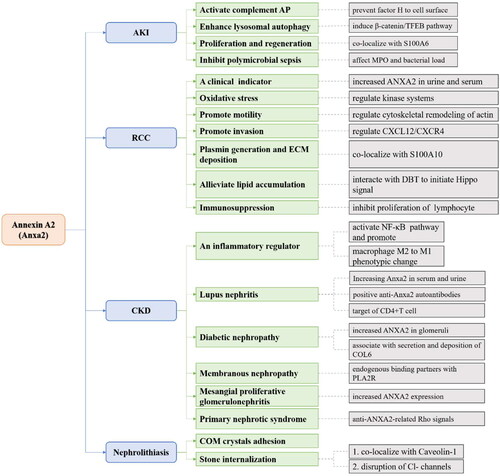Figures & data
Figure 1. Structure of the Anxa2 protein. Anxa2 contains a highly divergent N-terminus and a conserved core domain in the C-terminus. The variable N-terminus includes one acetylation site and the three main phosphorylation residues Tyr23, Ser11 and Ser25. This N-terminal region also contains a binding site for the S100 protein family, tPA and NES. The Anxa2 core domain in the C-terminus consists of four homologous repeats. This domain has the ability to bind phospholipids in a Ca2+-dependent manner and interact with F-actin. tPA = tissue plasminogen activator, NES = nuclear export signal.

Figure 2. Physiological function of Anxa2 in renal cells. Anxa2 in the cytoplasm is linked with vesicles that mediate transport events (including water channel, ion channel, Ca2+‐channels) and the cytoskeleton dynamics. Extracellular membrane Anxa2 is a receptor for tPA, is involved in certain signal transduction pathways and has anti-thrombogenic properties and renal fibrinolysis. Anxa2 help control chemotaxis of immune cells to maintain vascular integrity. Anxa2 can also be released locally in serum, urine and other body fluids. tPA = tissue plasminogen activator, P11= S100A10, P = phosphorylation.


